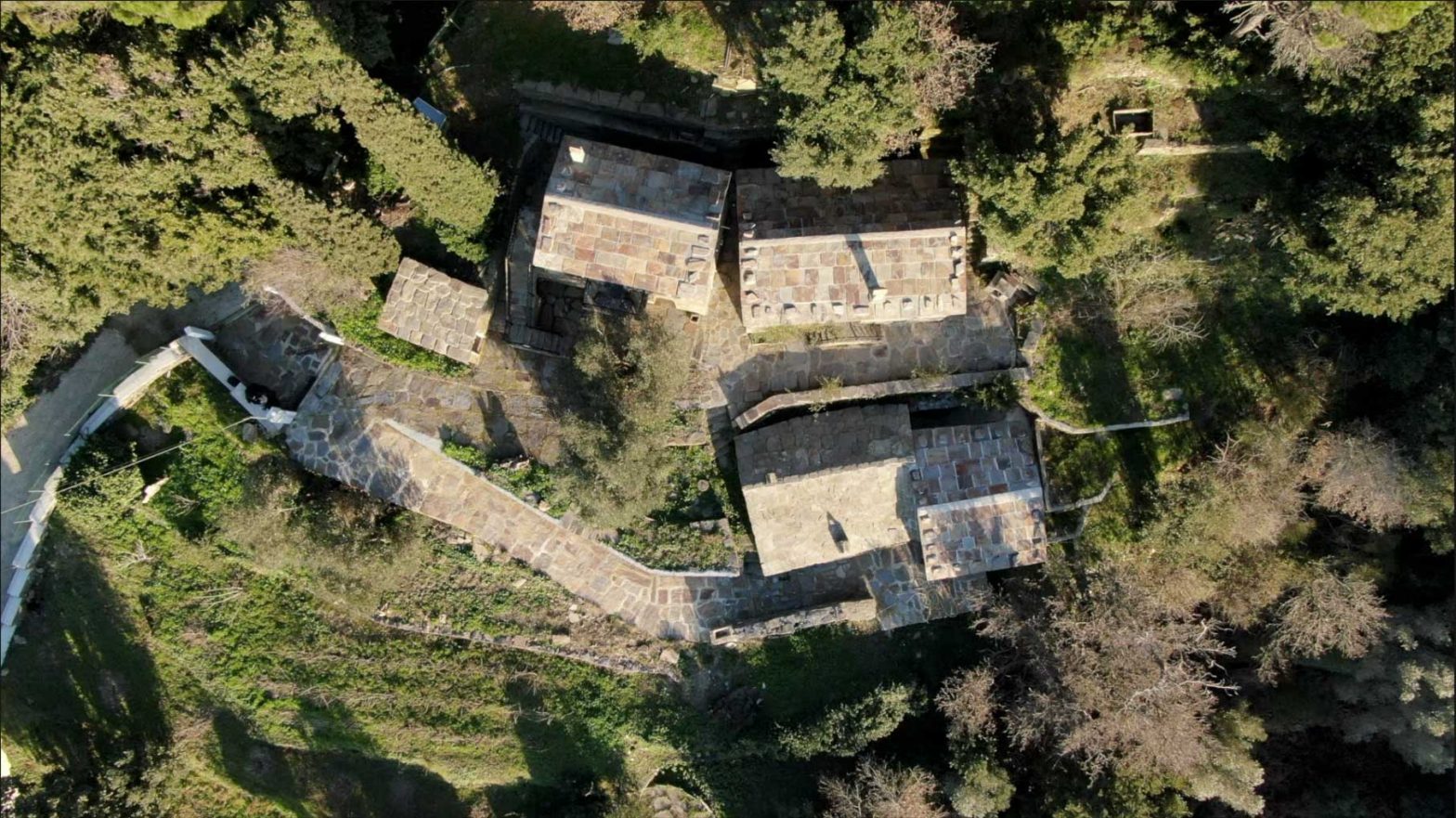Welcome
The houses were built by the Moaraites, (nickname implying the Peloponnesian origin – Morias = The Peloponnese)). The old man was probably called Georgios or Vassilis Moraitis. He found resort in Ikaria chased by the Turks during Ottoman occupation.
He had four children. Yiannis, Petros, Triantafyllia and Alithini. Of these four only Yiannis Moraitis had a family.
He got married to Katerina Karampeti and had six children, Vassilis, Giorgis, Dimitrios, Androniki, Sofia and Eleni.
Later Yiannis Moraitis emigrated to the U.S.A., where he worked hard and made a fortune.So he had Pyrgos (tower) built in the 18th century.ο It was a two storey building. As the family grew larger the second floor was used as a second bedroom.
The square house was built at the beginning of the 19th century.ου It consisted of four rooms. ( the kitchen, living room, and two bedrooms).
The last offspring to live there was Kalliopi Tsante. She left Monokampi in 1952. She was the daughter of Sofia Moraiti Tsermegka.
Sofia’s grandson, Vasilis Tsantes bought the estate from his cousin (Vassilis Moraitis son) and had it renovated with a lot of love and respect to tradition.
The old house. Ikarian residence during the piracy era.
The first home to be built in about the 14th centuryο was a unique, low ceiling place covered with reeds and slabs.
The room which was used as kitchen,living room and dining room also had an oven which was coonected to a mill where wheat and barley was ground into flour.
The fireplace was big enough to have meat smoked so as to preserve it. The three parallel stones on the wall opposite the entrance showed that it was a Christian home. On the same wall there was also the ” hostokeli".
It was a cellar but it also served as an escape route through a secret door whenever pirates were raiding, looting and killing.
Next there was the storeroom with the pitharia (big containers) and above it was the bedroom.
There was a wall built in front of the house tall enough to hide it so as not to be seen from the sea. On that wall there were recesses used as stoves to cook in summer, places to store containers and also sinks.
Facing the stairs on the right there was the “pythostasi” a place to bury and store 13 wine containers.

